Madeira wine is a fortified wine that has been produced on the Madeira island, located off the coast of Portugal, for over 500 years. This unique wine is known for its rich, complex flavors and long shelf life, making it a favorite among wine enthusiasts and collectors alike.
What is special about Madeira?
What sets Madeira wine apart from other fortified wines is its unique production process. The wine is heated and oxidized, a process known as estufagem, which gives it its distinctive flavor and aroma. Madeira wine is also aged for a minimum of three years, although many varieties are aged for much longer, resulting in a wine that is both rich and complex.
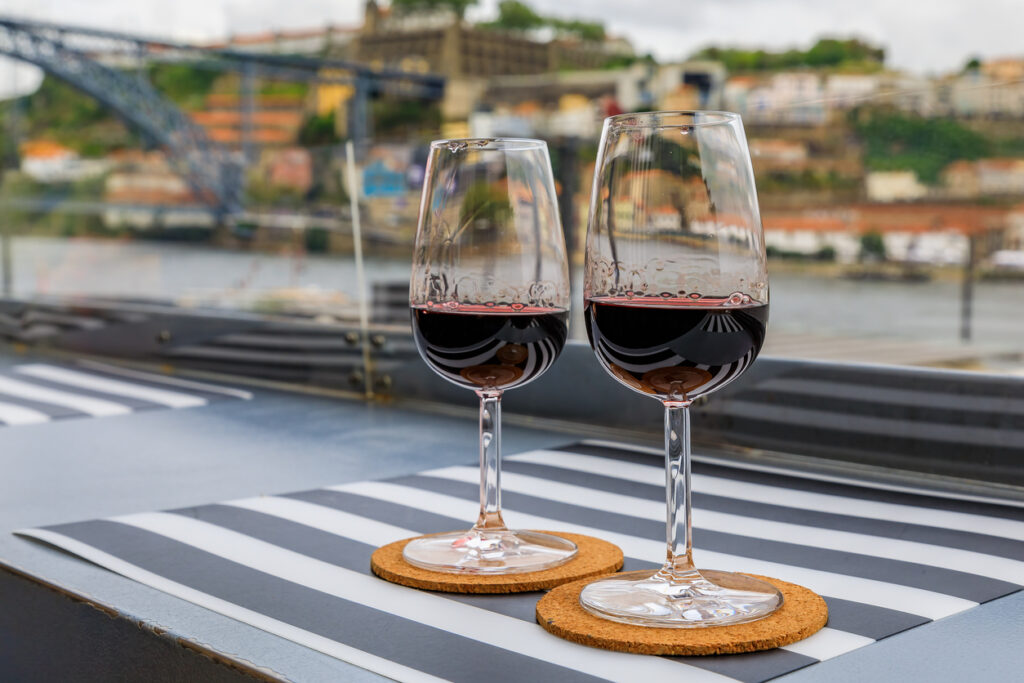
History of Madeira Wine
Madeira wine is a fortified wine that has been produced on Madeira for over 500 years. The wine is made from a variety of grapes, including Tinta Negra, Sercial, Verdelho, Bual, and Malvasia, and is known for its unique flavor profile and long aging potential.
Origin of Madeira
The origins of Madeira and wine production can be traced back to the 15th century, when Portuguese explorers began using the island of Madeira as a stopover point on their voyages to Africa, Asia, and the Americas.
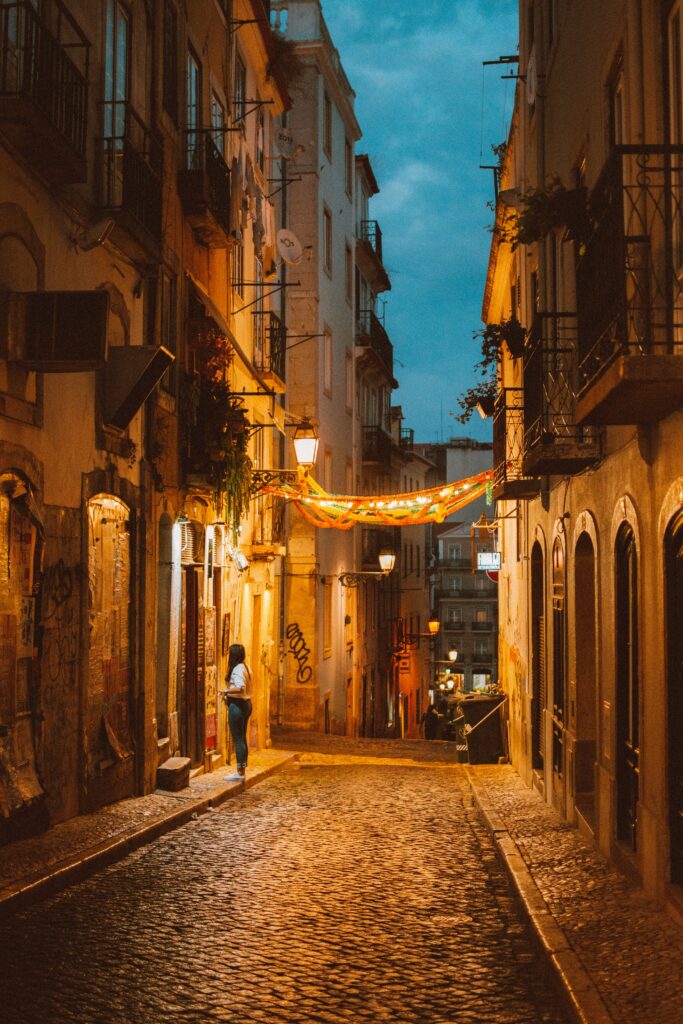
Born on the seven seas
It is said that the sailors would often stock up on wine before departing, and that the wine would spoil during the long journey. However, upon their return to the Madeira islands, they discovered that the heat and movement of the ship had actually improved the flavor of the wine, creating a new and unique style of fortified wine.
By the 18th century, Madeira wine had become a popular export, particularly to the American colonies. In fact, it was one of the few wines that could withstand the long sea journey without spoiling, making it a favorite among traders and merchants. Madeira wine was even used to toast the signing of the Declaration of Independence in 1776.

Production Process
Madeira wine is produced in vineyards on the Portuguese island of Madeira, located in the Atlantic Ocean. The production process of Madeira wine is unique and involves several steps that contribute to its distinct flavor and aroma.
Harvesting and Fermentation of the Grapes
The grapes are first harvested and crushed to extract the juice. The juice is then fermented in stainless steel vats or wooden barrels for several days to convert the sugar into alcohol. The fermentation process is stopped by adding a neutral grape spirit, which raises the alcohol content to around 20% ABV.
Estufas
After fermentation, the wine is aged in wooden barrels that are placed in warm rooms called estufas. The estufas are heated by steam or hot water, and the wine is kept at a temperature of around 45-50°C for several months. This process, known as estufagem, helps to develop the unique flavors and aromas of Madeira wine.
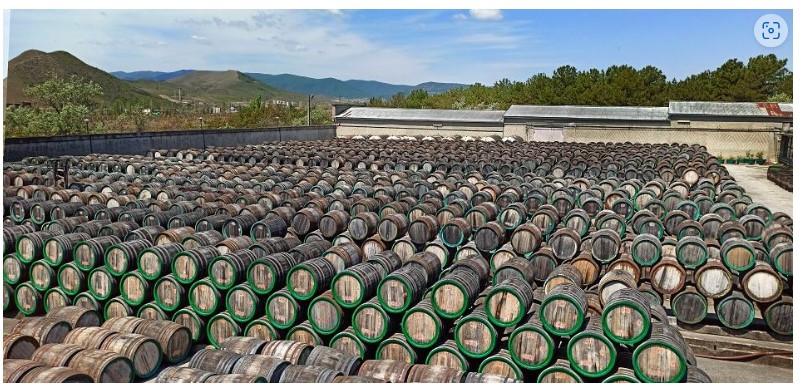
Once the wine has been estufado, it is transferred to oak casks where it undergoes a slow maturation process. The wine is aged for a minimum of three years, but some Madeiras are aged for decades or even centuries. During the aging process, the wine is exposed to heat and oxygen, which contributes to its nutty, caramelized flavor.
Botteling and Labelling
Finally, the wine is bottled and labeled according to its style and age. Madeira wine is classified into four styles: Sercial, Verdelho, Bual, and Malmsey. The four styles of madeira differ in sweetness and are named after the grape varieties used to produce them.
Madeira wine is also classified according to its age, with the youngest being three years old and the oldest being over 100 years old.
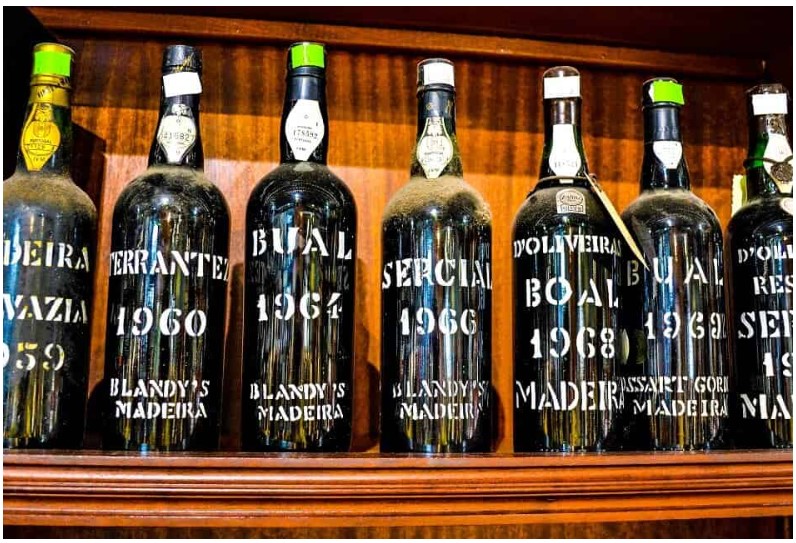
The production process of Madeira wine is time-consuming and requires careful attention to detail. However, the end result is a unique and flavorful wine that has been enjoyed for centuries.
Types of Madeira Wine
Blended and single varietal madeira are two different types of wines that have distinct characteristics. Blended madeira, as the name suggests, is a mixture of different grape varieties grown in Madeira.
Single vs. Blended Varietal Madeira
The blending process allows winemakers to create unique flavors and aromas that cannot be achieved with a single varietal. This technique has been used for centuries to produce some of the most popular Madeiras on the market.
On the other hand, single varietal madeira is crafted using only one type of grape variety. This approach emphasizes the unique attributes of each grape variety and showcases its full potential in terms of flavor, aroma, and texture.
Unlike blended madeira, which can vary from batch to batch depending on the grapes used in the blend, single varietal madeiras have a consistent taste profile that wine lovers can appreciate across vintages.
Grapes for single varietal Madeiras
There are four main types of Madeira wine, each with its own characteristics and uses.
Sercial (“Ser-seal”)
Sercial is the driest and lightest of the Madeiras. It is typically served as an aperitif and pairs well with salty snacks, such as nuts and olives. Sercial is aged for at least ten years in oak barrels, giving it a pale color and a crisp, acidic taste.
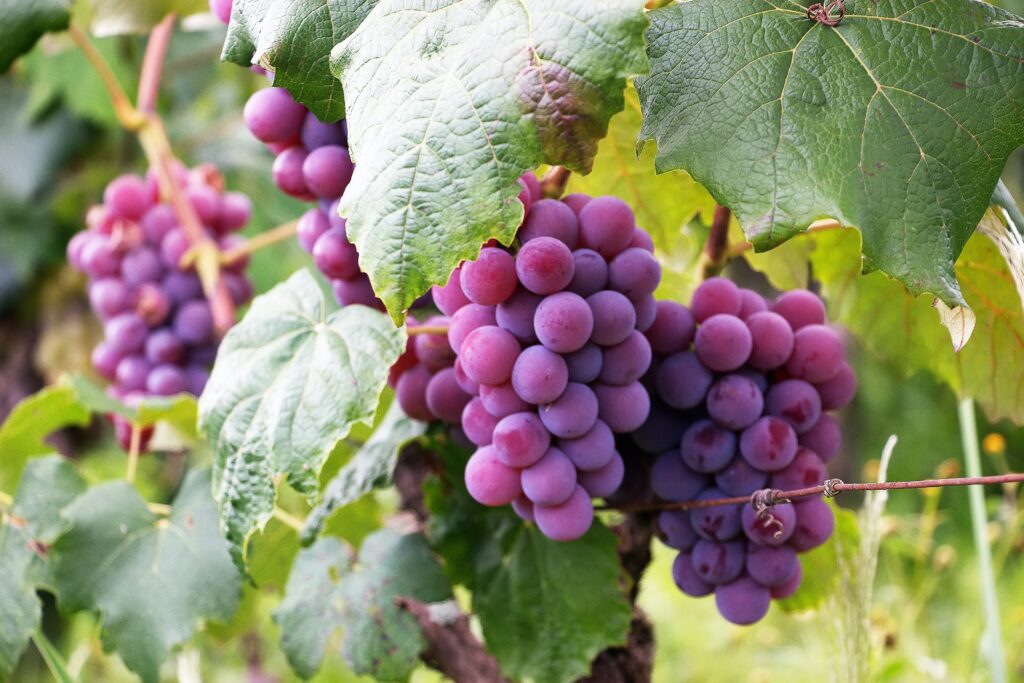
Verdelho (“Ver-dell-oo”)
Verdelho is slightly sweeter than Sercial, but still has a dry finish. It is aged for at least five years in oak barrels, developing a golden color and a complex flavor profile. Verdelho pairs well with seafood and spicy dishes.
Bual (“Buwall”)
Bual is a medium-sweet Madeira wine, with a rich, caramel flavor. It is aged for at least fifteen years in oak barrels, developing a dark amber color and a smooth, velvety texture. Bual pairs well with desserts and strong cheeses.
Malmsey (“Malm-see”)
If you are looking for a sweet madeira, Malmsey is the sweetest of the Madeiras. It has a rich, raisin-like flavor. Malmsey is aged for at least twenty-five years in oak barrels, developing a deep brown color and a syrupy texture. Malmsey pairs well with chocolate and other rich desserts.
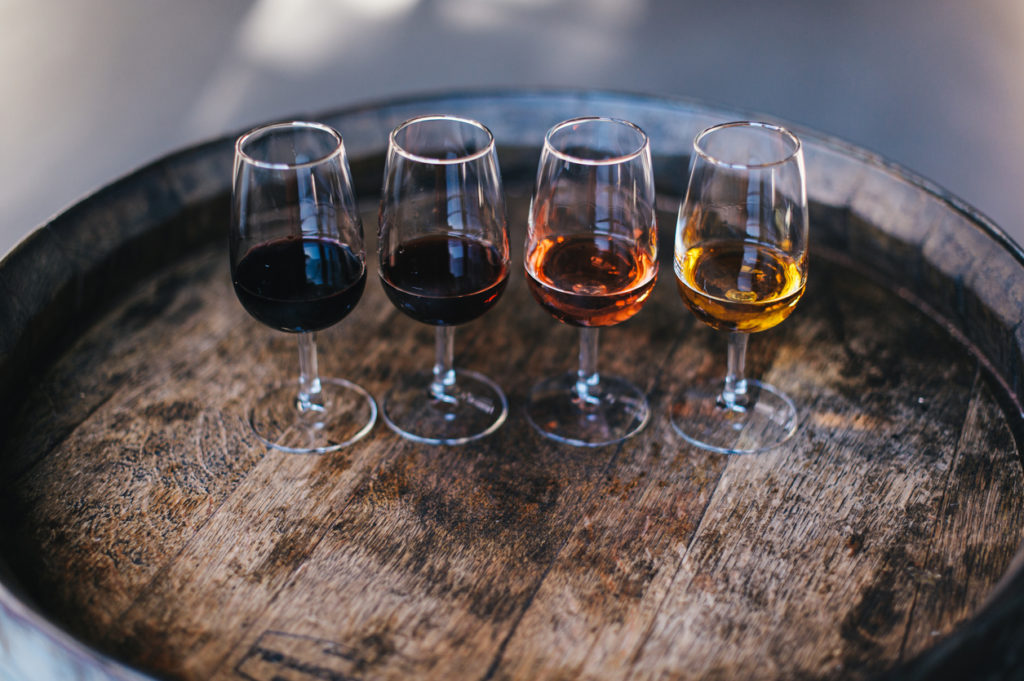
Each type of Madeira wine has its own unique character and flavor profile, making it a versatile choice for pairing with a variety of foods. Whether you prefer a dry, acidic wine or a sweet, syrupy one, Madeira has something to offer.
Blended Madeira Variants
Blended Madeira Variants are the finest examples of fortified wines produced in Portugal. These variants have been blended to perfection to give you a unique taste and experience that is unmatched by other wines.
Finest Madeira
It`s one of the cheaper madeira wines contrary to what the name suggests. It`s a blend of 3 year old madeira based on the tinta negra red grape grape.
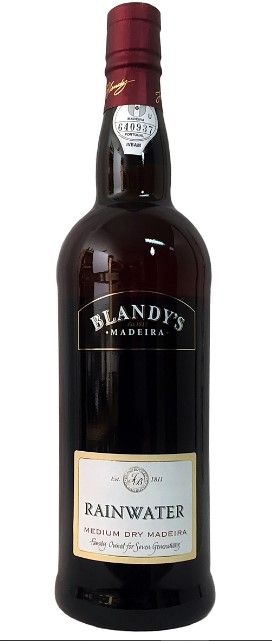
Rainwater Madeira
One of the more popular types of blended Madeira is Rainwater. It is known for its light and refreshing taste. This madeira wine made from the tinta negra grape is at least 3 years old and. Rainwater Madeira has a pale color and a delicate aroma with hints of almond and vanilla.
Finest and Rainwater Madeira are well suited for cooking and cocktails due to their light taste.
Reserve Madeira
Another popular variant is Reserve Madeira, which has been aged for at least five years in oak barrels. This gives it a more robust flavor profile that includes notes of caramel, raisins, and nuts.
20 year-old
This Madeira is a rare wine. It `s a blend of different vintages which are at least 20 years old.
How do Madeira Wines Taste?
When it comes to tasting notes for Madeira wine, there are a few key characteristics to look out for. Madeira is known for its complex, rich flavors and aromas, which are the result of the unique production process and aging methods. Here are some of the most common tasting notes you might encounter when trying Madeira:
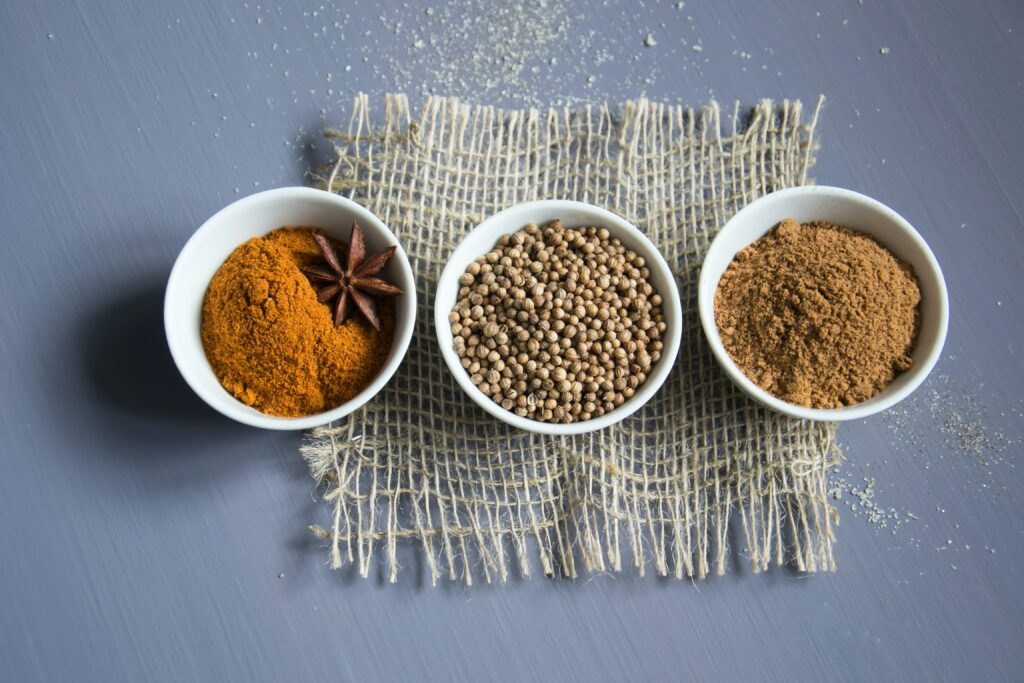
- Nutty: Madeiras often have a distinct nuttiness to them, which is a result of the aging process. Look for notes of almonds, hazelnuts, or walnuts. This also includes aroma of orange peel
- Caramel: Another common flavor in Madeira is caramel or toffee. This comes from the caramelization of the sugars during the heating process.
- Dark Fruit: Madeiras can also have notes of dark fruit, such as blackberry or plum. This is more common in younger Madeiras.
- Smoke: Some Madeiras have a smoky quality, which comes from the toasting of the barrels during the aging process.
Mouthfeel of Madeira
When it comes to the mouthfeel of Madeira, you can expect a full-bodied wine with a long finish. The high acidity and alcohol content can make them quite intense, so they pair well with strong flavors like blue cheese or dark chocolate.
Overall, Madeira wine is a unique and complex drink with a long history and a loyal following. Whether you’re a wine connoisseur or just looking to try something new, the Madeira wine production is definitely worth exploring.
How to Serve Madeira wine
Like other wines, serving madeira at the right temperature is key to unlocking its full potential. The ideal serving temperature for madeira depends on the style of wine you have chosen.
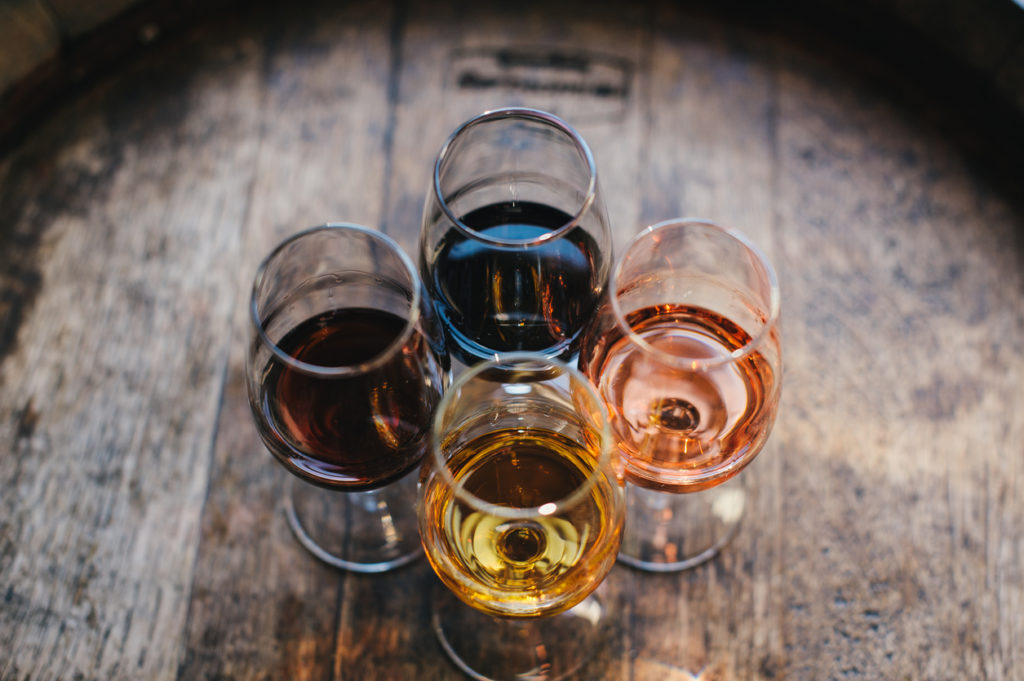
For dry madeiras such as Sercial or Verdelho, it’s best to serve them chilled between 10-12°C (50-54°F). This helps to accentuate their crisp acidity and nutty flavors. Medium-style madeiras like Bual or Malmsey should be served slightly warmer at around 14-16°C (57-61°F) to highlight their rich flavors and caramel notes. Additionally, vintage madeiras should be decanted before being served.
Choosing the right glass can also enhance your enjoyment of this delicious drink.
Food Pairings
When it comes to pairing Madeira wine with food, there are a few general rules to follow. The rich, complex flavors of Madeira make it a versatile wine that can be paired with a variety of dishes, from savory to sweet. You can use them to acompany your meal but also as a dessert wine for the sweetest style of variants. Here are a few suggestions to get you started:
Savory Pairings
- Roasted meats, such as beef, lamb, or pork
- Game meats, such as venison or duck
- Strong cheeses, such as blue cheese or aged cheddar
- Nuts, such as almonds or walnuts
- Mushrooms, such as portobello or shiitake
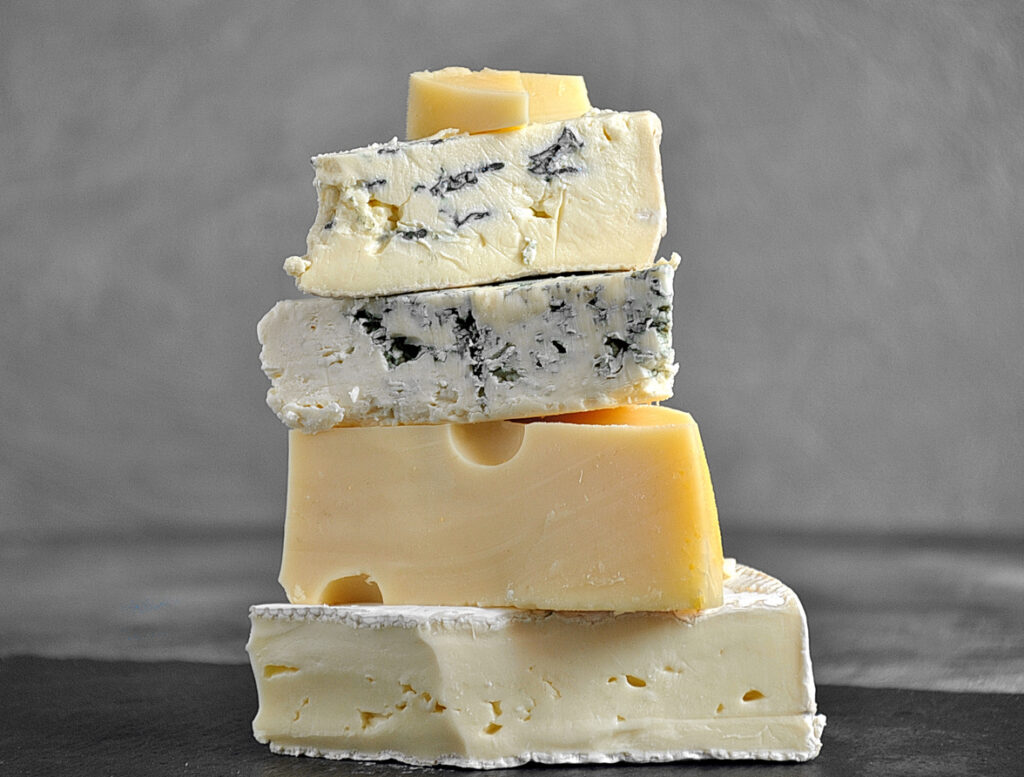
Sweet Pairings
- Chocolate desserts, such as cake or truffles
- Caramel desserts, such as flan or crème brûlée
- Dried fruits, such as figs or apricots
- Spiced desserts, such as gingerbread or pumpkin pie
- Nutty desserts, such as pecan pie or baklava
Remember, these are just guidelines. Experiment with different pairings to find what works best for your palate. And don’t be afraid to try Madeira with unexpected dishes, such as spicy Asian cuisine or rich Indian curries. The possibilities are endless!
10 Best Madeiras To Buy In 2023: Tasting Notes and Prices Included
In 2023, there are more options than ever before for those looking to explore the world of Madeira wines.
From dry to sweet, white to red, there is a Madeira wine for every palate. Our list of the 10 best Madeiras to buy in 2023 includes tasting notes and prices to help you make an informed decision.
Whether you’re a seasoned vintage Madeira- drinker or a newcomer to the world of fortified wines, this list has something for everyone.
How to Choose the Best Madeira Wine
Madeira wine is a unique and complex fortified wine that is produced on Madeira island. With so many different styles and madeira producers now available, choosing the best Madeira wine can be a daunting task. Here are a few tips to help you select the perfect bottle:
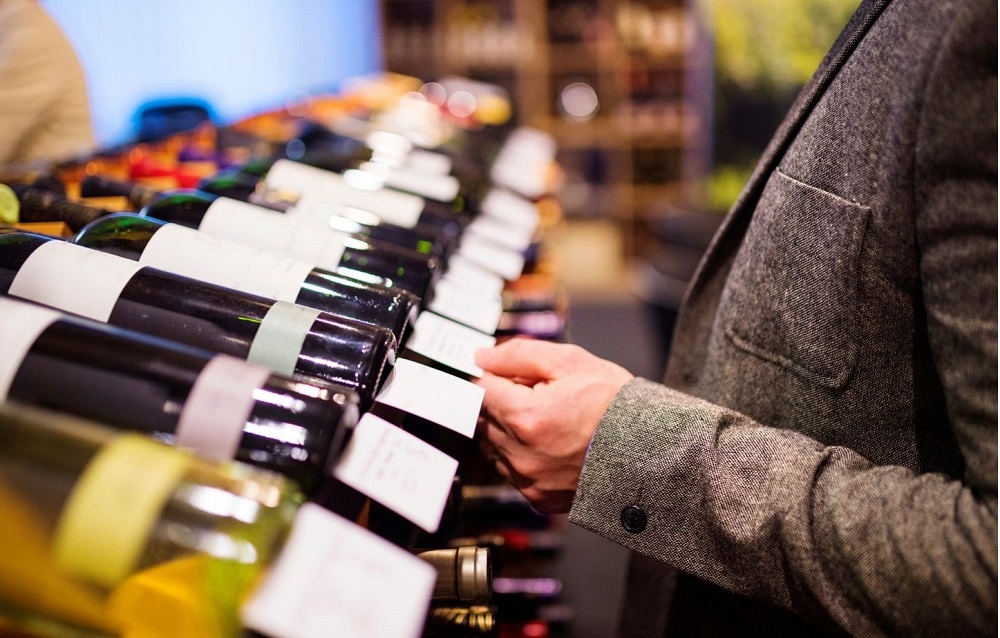
- Consider the style: Madeira wine comes in a variety of styles, from dry to sweet, and from light to full-bodied. Consider what you will be using the wine for, as different styles pair better with different foods.
- Know the grape: Madeira wine is made from four main grape varieties: Sercial, Verdelho, Bual, and Malvasia. Each grape produces a different style of wine, so knowing which grape was used can help you choose the right bottle.
- Look at the age: Madeira wine is often aged for many years, and the age can greatly affect the flavor and complexity of the wine. Consider the age of the wine when making your selection.
- Read reviews: Look for reviews and ratings from trusted sources to help guide your decision. Wine experts can provide valuable insight into the quality and flavor profile of different Madeiras.
By considering these factors, you can confidently choose the best Madeira wine for your needs. Whether you are looking for a dry wine to pair with seafood, or a sweet wine to enjoy as a dessert, there is a Madeira wine out there that will suit your tastes.
Top 10 Best Madeira Wines to Buy in 2023
Madeira is a fortified wine that comes from the Portuguese island of Madeira. It is known for its unique taste and long shelf life. Here are the top 10 best Madeiras to buy in 2023:
These Madeiras are all excellent choices for any wine lover. Whether you prefer a dry or sweet wine, there is a wine from a Madeira wine company on this list for you. Enjoy the unique taste and long shelf life of Madeira with one of these top 10 best Madeira wines to buy in 2023.

Tasting Notes and Prices of our favorites!
When it comes to Madeira wine, the tasting notes can vary greatly depending on the grape variety, age, and style of the wine. Here are some of the best Madeiras to buy in 2023, along with their tasting notes and prices:
| Wine | Tasting Notes | Price |
|---|---|---|
| Blandy's 10 Year Old Malmsey | Notes of caramel, toffee, and dried fruit. Rich and sweet with a long finish. | $40 |
| Henriques & Henriques 15 Year Old Verdelho | Aromas of citrus and nuts. Dry and complex with a hint of smokiness. | $60 |
| Justino's 20 Year Old Terrantez | Intense flavors of dried fruit, honey, and spices. Full-bodied with a long, smooth finish. | $100 |
If you’re looking for cheaper Madeiras, the Blandy’s 5 Year Old Sercial is a great choice. It has a refreshing acidity and notes of citrus and nuts, and it’s priced at just $20.
On the other end of the spectrum, the rare and highly sought-after D’Oliveiras 1908 Verdelho is a true collector’s item. With only a few bottles left in existence, it boasts complex flavors of caramel, coffee, and nuts, along with a silky smooth texture. The price tag, however, is a staggering $10,000.

Overall, Madeira wine offers a unique and complex flavor profile that is worth exploring. Whether you’re a seasoned wine connoisseur or just starting out, there is a Madeira wine out there for everyone.
Conclusion
There you have it, the 10 best Madeiras to buy in 2023. We hope this article has provided you with valuable insights on some of the best Madeiras available on the market today. Whether you are a seasoned wine connoisseur or a beginner, there is a Madeira wine on this list that is sure to impress your palate.
From the rich, full-bodied flavors of the Blandy’s 10 Year Old Malmsey to the crisp, refreshing taste of the Henriques & Henriques 10 Year Old Verdelho, there is something for everyone on this list. These wines are perfect for special occasions, as gifts, or simply for enjoying on a quiet evening at home.

